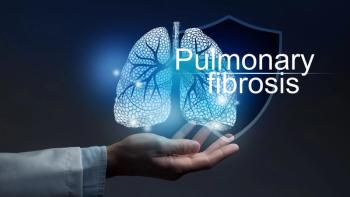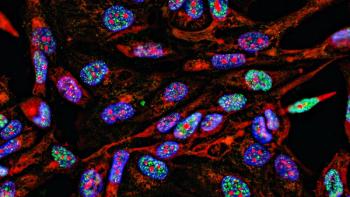
- Pharmaceutical Technology, May 2022
- Volume 46
- Issue 5
- Pages: 32-33
Key Factors in the Development of Data Analytics for Industrial Pharmaceutical Equipment
Digital maintenance solutions can help visualize the value and key activities provided by the equipment vendor from inception to utilization.
Machinery maintenance currently represents a considerable line in the budget of industrial organizations, which is why enterprises are constantly seeking ways to improve the efficiency and cost of their maintenance activities. The latest trend is to establish digital analytical models based on the capacity to extract data from the desired equipment, but that raises the question of how to implement the necessary technologies and procedures within an existing facility populated with systems that pre-date the industrial Internet of Things and Industry 4.0 defined concepts.
A cloud data analysis platform to model and analyze the behavior of pharmaceutical industrial equipment may solve this problem. Using a non-intrusive approach enables a gradual and smooth adaptation of existing equipment to exploit new digitalization and data techniques while trying to minimize a reformulation of existing processes and instrumentation deluge.
The concept behind the solution
One of the main concerns during the inception of a solution is how to provide relevant value in the maintenance field, especially regarding the impact that a data driven approach produces in reducing the number and cost of maintenance operations as well as the improvement of the equipment availability and reliability. Unlike performance optimization processes, digital maintenance is not based on the adjustment of equipment parameters to achieve greater productivity, but on the prescription of actions on the equipment to reduce the risk of unexpected failures both in the availability of the equipment as well as in the quality of the products it produces.
The target equipment of the platform is process equipment for pharmaceutical manufacturing. Unlike those intended for the discrete operations in the manufacturing industry, process equipment is designed for continuous operations, which presents extremely high variability due to the manufacturing processes in which they are used. In this sense, they can be considered unique elements. In addition, the cost of this equipment means that its longevity in the production lines is high, resulting in several generations of equipment coexisting despite differences resulting from technological advances made between releases.
To overcome this as well as to provide a scalable and maintainable solution, one can implement a “standard” behavior model based on the latest generation of equipment that will be mapped to the particularities of the existing equipment. This model serves as a reference to establish a comparison baseline where it is possible to compare the performance of a specific piece of equipment with a database of equivalent machines in equivalent operations, which is key to obtaining the elevated level of model precision needed for accurate predictive maintenance.
Templating the right data
As already mentioned, the solution is based on a “standard” behavior model that mimics the real equipment. This digital twin includes the definition of the:
- Data to be collected
- Process model
- Key performance indicators (KPI)
- Maintenance model (1).
It must be fed with machine data through a connection device. An implementation team that maps existing equipment signals to the expected ones in the model by using an asset type tag template, adapting the existing process of the machine to the expected process model.
Process adaptation requires high knowledge not only of the process but also of the system design and control because it:
- Requires finding the matching manufacturing process control on the manufacturing process control cycle tagging both for the existing machine and the defined model
- Could require filling in the gaps and/or adapting “custom” defined cycles in case the existing process was not fully compliant with the defined one.
Once set up, the platform will go live and begin gathering the corresponding data. The received data and the generated KPI will be validated to detect any defect that does not comply with the desired result. After this validation, the platform is production-ready for data ingestion and its analysis.
Taming the maintenance model
Once data starts to be collated, it is time to adjust the maintenance model, as this is the main objective of the platform. The maintenance model can be split into three parts:
- The model definition
- The digital elements
- Spare parts, maintenance, and repair operations (MRO) on the customer side.
The model is defined by means of a failure mode and effects analysis that is consistent with the equipment model type stated above. This highlights the failure causes and their impact, identifies the components associated with them, and specifies their detectability. This detectability is implemented in insights through algorithms or rule systems that use the variables/KPI defined in the platform.
Both the specific MROs and information regarding them that is intended to help its optimization are taken into consideration. At first sight, this may seem easy to implement, but at a practical level, it is no small undertaking. To manage it successfully, three activities must be performed:
- Mapping and adapting what is established in the failure model to the existing equipment
- The introduction of specific MROs for existing equipment
- Monitoring of detection settings based on history.
The last two points require a close interaction between the vendor and the maintenance personnel since much of the information necessary to fine-tune the maintenance system is normally scattered and does not have a sufficient level of traceability that allows its introduction directly in the platform. At this point, the system is ready to enable the two operating modes of the platform.
Condition-based maintenance relies on real-time monitoring of machine data. A supervising module is constantly monitoring machine-provided data or status; and in case of an anomaly, MRO is triggered. Anomalies occur when exceeding the predefined threshold (manual or AI-defined) over a single or a set of defined variables.
Predictive maintenance is an extension and improvement of condition-based monitoring, but a more diagnostic analysis is performed to predict future events. The objective of predictive maintenance is to calculate the remaining useful lifetime of a component and schedule MRO based on:
- The real-time monitoring of asset condition and performance
- The analysis of work order data, and
- Benchmarking MRO inventory usage.
Supervising ML/AI
Once the solution has been launched, a support team is necessary. This team is responsible for providing long-term support to the end-user and for supervising the platform operations, especially monitoring the machine learning/artificial intelligence (ML/AI) system.
As previously mentioned, the platform provides a prediction model based on the behavior of the equipment that is confronted with a data model based on an aggregate of equipment of the same type. The supervision of the prediction engine requires the system monitoring as well as the supervision of the classification, partitioning, and grouping of the different equipment based on their characterization and acceptance degrees. In other words, the support group ensures that a certain degree of representativeness and accuracy is met in benchmarking the performance of specific equipment with a database of equivalent machines in equivalent operation so that the predictions are valuable and accurate.
The work of the support team can be exemplified in the case of an equipment alarm that is triggered above the established mean value. In this case, the support team analyzes if this case is a real issue in the given equipment, if it is a false positive due to a low level of the detection threshold, or if it is a situation not contemplated in the model. Depending on this analysis, the support team manages the incident—launching the corresponding MRO operation, adjusting the detectability limits, or evaluating the suitability of expanding the prediction model.
Conclusion
When implementing a cloud data analysis platform, it is crucial to understand the constitutive stages necessary to implement useful data analytics, as they can be used to improve the overall equipment effectiveness of existing equipment from the initial design concept to how they are materialized into a final solution. Similarly, the value provided by the equipment vendor must be considered from the inception and implementation of a digital maintenance solution to its exploitation. This not only provides a multi-equipment database but also added value services to maintenance operations.
Reference
J. Serrat and J. Piedrafita, “Preventive and predictive digital maintenance in Pharma 4.0: A journey from data to actionable insights.” Whitepaper, Nov. 1, 2021.
About the authors
Joan Piedrafita and Xavier Olivella are the digital development project manager and global customer service engineer, respectively, at Telstar.
Article details
Pharmaceutical Technology
Vol. 46, No. 5
May 2022
Pages: 32-33
Citation
When referring to this article, please cite it as J. Piedrafita and X. Olivella, “Key Factors in the Development of Data Analytics for Industrial Pharmaceutical Equipment,” Pharmaceutical Technology 46 (5) 32-33 (2022).
Articles in this issue
over 3 years ago
Speeding Up Development for Traditional Biologicsover 3 years ago
Inhalation Formulation Development: Predicting API Behaviorover 3 years ago
An Evolving Approach to Drug Deliveryover 3 years ago
Topical Formulations in Pharma–Balancing Form and Functionover 3 years ago
Assessing the Success of CRISPR Gene Therapies Using ddPCRover 3 years ago
A Robust Quality Culture Benefits Allover 3 years ago
Weighing Isn’t an Uncertain Process, Is It?over 3 years ago
Advances in Dissolution TestingNewsletter
Get the essential updates shaping the future of pharma manufacturing and compliance—subscribe today to Pharmaceutical Technology and never miss a breakthrough.





